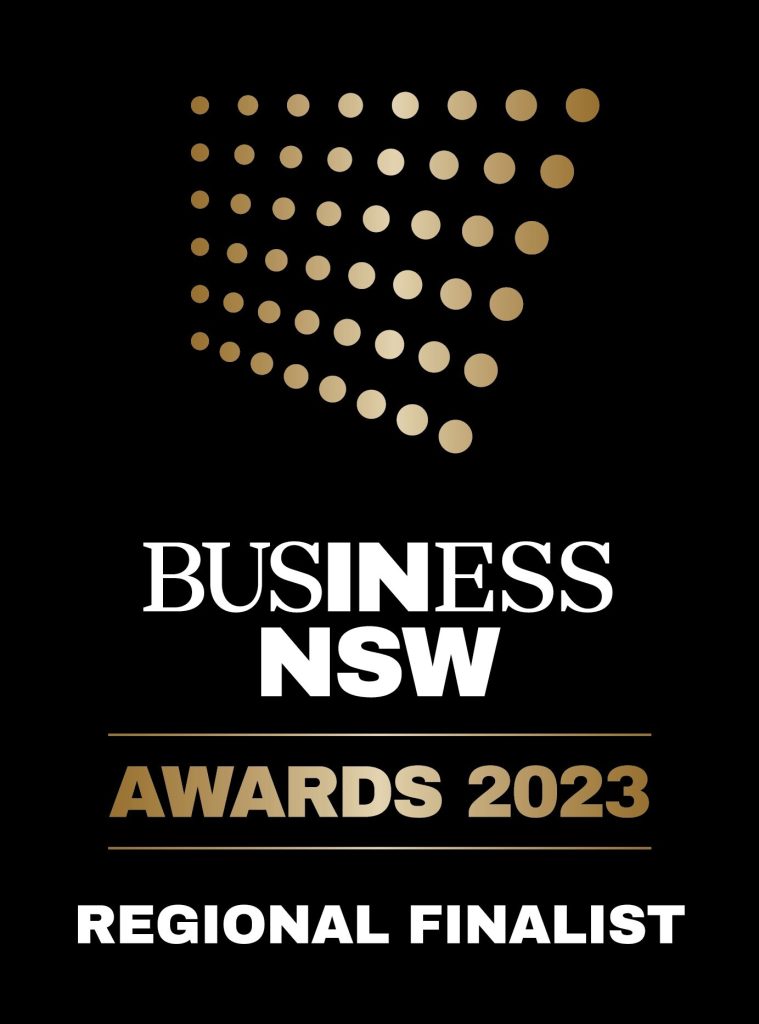The employer landscape has changed. Today, it’s very much a candidates’ market. This means employers have to work much harder to attract top candidates and remain competitive in a constantly changing business landscape.
And to keep them.
Industry reports and constant news of labour shortages substantiates anecdotal evidence that today many employers have major challenges with their People and Culture business units.
Alarmingly, there is a clear gap between what candidates want and what employers think that candidates want. This can result in a poor match of employer offerings for the attraction and retention of talent to actual candidate aspirations.
With candidate expectations and needs significantly changed, and compounded by employer competition for attracting a smaller pool of top talent, an Employer Branding Strategy and campaign is now the key to attracting and retaining the top talent that drives business results.
Did you know 53% of workers are planning to leave their jobs within the next year?*
Employer Branding Meaning
Employer Branding meaning is the definition of managing a company’s reputation as an employer – from the employee’s perspective, not the organisation’s brand narrative.
Employer Branding is the set of perceptions that an organisation projects to the market in order to attract and retain talent.
Employer Branding conveys an organisation’s values and work culture – and tells the story of what it is like to work with that organisation – from inside the organisation.
Beyond the Position Description
Job advertisements outline the organisational narrative – from the organisation’s viewpoint – which give minimal insight into the reality of what it’s really like to work for the organisation.
This is the key piece of information that candidates are seeking as they pre-select themselves as a potential candidate – or not.
Research reports that organisations are only as successful as the people who work for them. A great team and positive organisational culture with clear vision drives excellent results. Conversely a team that lacks cohesion, direction and vision yields weaker organisational results.
High Calibre Talent Make Informed Decisions
High calibre candidates who seek outstanding opportunities do their research. In a position to choose which roles and organisations to apply for, their decision to apply is often based on criteria that’s beyond the advertised job and position description.
Organisational Reputation is Valuable.
An organisation’s Employer Brand will directly impact the organisation’s performance and success because of how the organisation is able to attract and retain top talent – or not – because of its reputation.
Brand Synergy
An Employer Brand is part of the organisation’s brand family. It works in synergy with the organisational brand and the Personal Brand of the C-Suite and leaders who have a profile and publicly represent the organisation. We call this The Brand Spiral.
When these brands all link synergistically, your Employer Brand can also amplify your marketing power.
This is because your people are the visible face of your brand. And people like to connect with, and do business with people they know and trust.
When focusing on how to improve a company’s reputation, Employer Branding is the most important tool to distil the messaging, develop the narrative, create the channels and populate them with content that conveys clear, cohesive, authentic and positive messages.
Reputation matters – 86% of workers would not apply for, or continue to work for, a company with a bad reputation with former employees or the general public**
Your Organisation Has a Google Profile - Want it or Not
Whether organisations like it or not, they already have an Employer Brand. And, because any brand is a set of audience perceptions, the organisation’s Employer Brand is actually owned by your audience.
The market’s perception IS your Employer Brand.
Building your Employer Brand without an Employer Branding strategy is like leaving on a road trip without a map.
An Employer Brand, like an organisational or a consumer brand, has a set of different components that should all work together to be a unique identifier and tell the story of an organisational workplace.
An Employer Brand begins with authenticity first and foremost. Strategically, it will also contain audience and market analysis, key messages, storytelling narrative, the distillation of an Employee Value Proposition (see below) before any visual elements such as logo [link to brand logo blog – forthcoming], colour palette, graphics, typography andmarketing assets such as websites and social media content are commenced. All of these elements combined give it Brand Power.
Did you know that 75% of job seekers consider an Employer’s Brand before even applying for a job? Or 52% of candidates research company’s sites and social media?***
Importance of Employer Branding in Recruitment
Employer Branding is not only critical to attracting and retaining top talent, but the impact on commercial returns and organisational growth is very real.
Backed up with an authentic and positive culture, strong Employer Branding can reduce turnover rates, cut recruitment costs and amplify performance because it is the bridge which helps to attract and retain top talent.
Employer Branding creates a ‘pull strategy’ of attraction which supports an organisation to stand out from the competition and magnetise game-changing talent.
According to LinkedIn, Employer Branding supports organisations with these benefits:
- 28% reduction in turnover
- 50% cost-per-hire reduction
- 50% more qualified applicants
- 1-2 times faster hire times****
Employer Branding directly engages with the challenges of today’s talent shortage, increased competition and a lack of talent pipelines.
Passive Candidates – Opportunity or Loss?
Importantly, Employer Branding taps into the 70% of the global workforce considered to be passive candidates. These are candidates who are not actively looking for a role, but would consider a new opportunity if it presented itself.*****
Perspective and Reputation
Creating an Employer Branding strategy that distils your organisation’s Employee Value Proposition, communicates your key offerings (from the employees’ viewpoint) and conveys an authentic narrative of what your organisation is really like to work for. It what amplifies your recruitment initiatives – and your organisational brand as well.
How your employees tell the story of what your organisation is like to work for is far more impactful and has far greater credibility than any organisational promotion can possibly achieve. This is the underlying component of your organisation’s reputation.
Employer Branding Ideas
Employer Branding ideas flow freely when a structured Employer Branding strategy is planned.
There are four key elements to an Employer Branding strategy:
- Employer Brand Value Proposition
- Website
- Social Media
- Onboarding and Retention Processes
1) Employer Branding Ideas: Employer Brand Value Proposition
The first step in creating an Employer Branding strategy is an audit of your current Employer Brand. What do Google and social media present to your audience about your Employer Brand?
Does your existing online presence as an employer truly represent your most up-to-date values and convey the future vision of your organisation?
The starting place for an Employer Brand is understanding your audience. Who are your target market/s? If we consider our perfect candidate, we can create a characterisation that includes their qualities, skills, knowledge and demographic elements. Desk research and data can reveal their content habits and determine the best channels to communicate with them, then to craft your messaging and determine the key elements of your organisation’snarrative.
2) Employer Branding Ideas: Website
An Employer Branding website, or simply culture and careers pages on your organisation’s website is the foundational ‘home’ for your Employer Brand. Your organisation’s owned digital channel, this is where you can better manage and positively direct the messaging for improved talent acquisition and retention.
A website is often the first place candidates review, and where all your Employer Branding content is housed. Your culture pages need to communicate the information candidates need to support their decision to make an application to join your team. All subsequent Employer Branding social media and email marketing should directly feed back to these website pages.
3) Employer Branding Ideas: Social Media
Nearly 50% of all candidates visit an organisation’s social media accounts as part of their employer research process. Social media is not only an essential communication channel in promoting your key competitive advantage, but also offers highly targeted advertising streams.******
Sustained, consistent key messaging across social media is key to actively targeting the passive candidate market and creating a pull strategy for top talent.
The most impactful channel for Employer Branding is obviously LinkedIn. An effective Employer Branding strategy not only includes an optimised organisational LinkedIn profile, regular posts, articles and engagement but also focuses on harnessing the power of your existing employee’s Personal Brands or LinkedIn profiles.
Did you know that 61% of candidates research a new job opportunity through their online network?
This means that candidates are not only seeking out members of their network who have worked at that organisation, but they also research the comments current employees are making about their employer.
That’s why the best Employer Branding strategies include Personal Branding strategies for key employees and tactics to increase engagement between your employees’ and your organisation’s social content.
4) Onboarding and Retention Processes
Once a candidate is successfully employed, onboarding is the first impression your organisation makes.
If your organisation sees high rates of turnover within the first three months of employment, this can be an indication that your current Employer Branding isn’t an authentic representation of a colleague’s real experience within the organisation.
While a successful Employer Branding strategy works to attract top talent, structured onboarding, and retention-focused people and culture programs are critical to improving retention.
Consider including the following within your onboarding training:
- A formal onboarding plan – a training checklist that identifies all training that a new colleague needs to complete in order to pass their onboarding phase. This is essential not only in ensuring they’re given all the information they need to succeed but also in switching their mindset from ‘in-training’ to ‘full employee’.
- An introduction to the history of the organisation
- An introduction to organisational culture – vision and values
- An introduction to organisational communication processes and preferences
- An introduction to all key personnel
- Training of each of the policies and procedures that the colleagues must be across

Retention strategies
Retention strategies are essential to keeping top talent. To successfully design retention strategies, seek to understand what the top priorities for your key candidates are.
One of the best ways to identify these priorities is to survey your existing team and be open in asking candidates.
Retention strategies can include –
- Competitive compensation
- Benefits programs
- Hybrid/flexible workplaces
- Education and training opportunities
- Community service leave
- Wellbeing leave
- Reward and recognition programs
Vim + Zest offers Employer Branding packages that are delivered by qualified and experienced leadership development and human resources professionals.
Our case studies for Employer Branding strategy have yielded exceptional results. These organisations have been recognised by winning Employer of Choice Awards.
Employer Branding Examples
Employer Branding examples help set a benchmark for Employer Branding strategies that afford people and culture results as well as performance power.
The following examples explore different Employer Branding tactics and how the value of Employer Branding has been harnessed.
Employer Branding Examples: Elements of Byron
Internationally award-winning resort Elements of Byron faced a significant recruitment challenge.
Not only is the resort challenged by local accommodation shortages that make finding labour harder, but following COVID-19, Elements of Byron, like many businesses, faced an unprecedented shift in candidate priorities and high competition in a candidate-led market.
Vim + Zest worked with Elements of Byron through the four key phases of Employer Branding to identify the resort’s target audience, a compelling Employee Value Proposition, employee-centric narrative, visual brand design and Employer Branding assets such as a webpage and social content.
Following the launch of Elements of Byron’s Employer Branding strategies, the resort secured 50 new colleagues within 30 days in a highly competitive labour market.

Employer Branding Examples: Canva
Online graphic design application company, Canva, is a prime example of an Employer Branding strategy that uses its mission and values as its Employer Branding strategy hero. Its dedicated Canva Life website is a best-in-class example of Employer Branding – no doubt supporting Canva to achieve over 300,000 applications per year, according to The Australian Financial Review.
Canva Life’s campaign is focused on the theme that ‘design can be used as a force for good’, inviting candidates to beinvolved in more meaningful work. They use real life imagery of team members participating and enjoying Canva’s distinctive culture. For those considering working at Canva, there is brand trust already built. These messages aresuccessfully amplified across social media channels with regularity.
Employer Branding Examples: Atlassian
Australian software company, Atlassian employs highly aspirational Employer Branding to attract the type of top talent who are boundary-pushers. Theirmessaging is future focused and showcases values of teamwork, community and creating positive change. It showcases employer awards and accolades, and key work benefits such as flexibility and dog-friendly workplaces.
Atlassian also creates a strong Brand Spiral between its organisational brand, Employer Brand and the Personal Brand of its founder and CEO Mike Cannon-Brookes.
Employer Branding Key Takeaways
Strong and proactive Employer Branding creates compelling talent attraction to an organisation that gives them the distinct advantage in a highly competitive, fast-moving, candidate-led market.
In a work environment with shifting candidate priorities, hybrid workplace changes and complexities, intense competition for top talent, the impact of Artificial Intelligence and passive employees who are flooded with new work opportunities, an Employer Branding strategy is essential to attract exceptional team-members who add value to organisations.
Rather than perpetuating an ineffective – and expensive – cycle of poor retention and time-consuming, volume-based recruitment practices, Employer Branding switches the focus from reactive to proactive.
When executed successfully, Employer Branding attracts a sharper, more appropriate and highly valuable talent pool. It’s the initiative which supports your organisation to stand out from your competitors and attract high quality candidates that will thrive in your organisation’s culture.
Your organisation saves on recruitment costs and attracts the type of candidates who become top-performing team members that power results and yield higher commercial return.
Vim + Zest offers tiered Employer Branding packages that are facilitated by both Senior branding and communications specialists and qualified Human Resources professionals.
** Forsey, Caroline (2023) Employer Branding: What it is and How to Build it for Your Business. www.hubspot.com
*** LinkedIn, The Ultimate List of Employer Brand Statistics for Hiring Managers, HR Professionals and Recruiters. Small to Mid-Sized Business Edition.
**** LinkedIn, The Ultimate List of Employer Brand Statistics for Hiring Managers, HR Professionals and Recruiters. Small to Mid-Sized Business Edition.
***** LinkedIn, The Ultimate List of Employer Brand Statistics for Hiring Managers, HR Professionals and Recruiters. Small to Mid-Sized Business Edition.
****** Cooke, Kirsty. (2022) Employer Branding: Definition, Process, Strategy, Measurement and Resources. www.beamery.com



